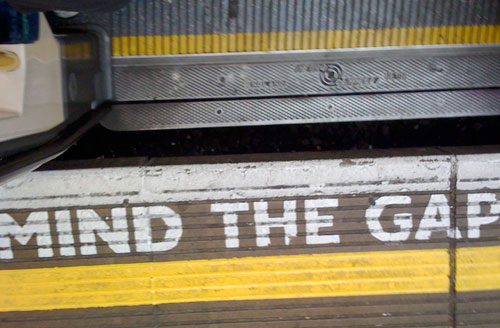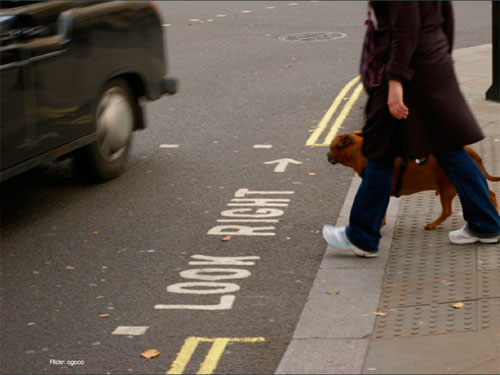There is little pedestrian about being a pedestrian in the UK.
It pays to heed the painted warnings underfoot between the platforms and trains throughout the color-coded labyrinth of the famed Underground—“MIND THE GAP.”

It is paramount, however, to heed the painted curbs at nearly every intersection—“LOOK RIGHT.” Perhaps you’ve had your close call with one of those stealthy red double-deckers zipping along the British side of the street. One misstep can ruin a vacation.
 For nearly two decades, I’ve been warning hospitals about the distance and distractions (gaps) between the points of dispensing and administering medications. I’ve appealed to nursing to “mind the gap” by implementing bar-code medication administration (BCMA) for matching the right patients with the right drugs.
For nearly two decades, I’ve been warning hospitals about the distance and distractions (gaps) between the points of dispensing and administering medications. I’ve appealed to nursing to “mind the gap” by implementing bar-code medication administration (BCMA) for matching the right patients with the right drugs.
I’ve also appealed to pharmacists to utilize bar-code scanning at every storage-and-retrieval point en route from loading docks, through their pharmacies, and on to bedsides.
Fortunately, the gap between hospitals with and without bar-coding systems is closing. In 2002, fewer than 5 percent of hospitals were using bar-code medication administration (BCMA) technology. Today, well over two-thirds of America’s hospitals are scanning most medications, including IVs, before they are administered. Thankfully, the remaining hospitals are close behind.
Furthermore, most of the 80 percent of hospitals with automated dispending cabinets employ bar-code scanning to verify that the right medications are being placed in the right compartments. Similarly, when using ubiquitous pill-packaging machines, technicians are required to scan bar-codes on manufactures’ bulk containers for a match when filling dispensing cassettes. Not a few hospitals use verification-scanning systems when placing and picking medications in automated carousels and on static shelving. In other words, we’ve been minding the gap.
However, it could be argued that most hospitals have a technology blind spot in their preparation processes as only 5 percent are scanning ingredients while producing IVs.
In clean rooms, technicians remove high-risk drugs from manufacturers’ bar-coded containers and inject them into unmarked bags and syringes. The new labels placed on these preparations often include bar codes for scanning at the point of administration. However, it is possible for scanning to verify that the bar code on the product maps to the bar code on the right patient while the IVs themselves contain the wrong drugs or volumes.
Is it any less important to verify ingredients when producing compounded sterile products than to verify that we are putting the right pills in the right packages or the right packages in storage compartments?
It’s a bit like a London pedestrian minding the gaps on train platforms while failing to look right at intersections—with a slight difference: someone else’s life is at stake.
Keep minding the gap. But don’t forget to look right.
What do you think?
Mark Neuenschwander aka Noosh
